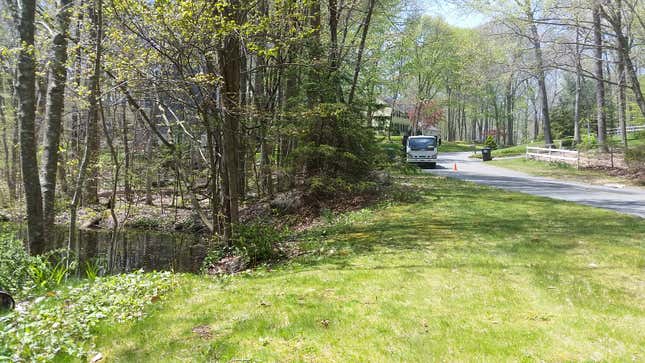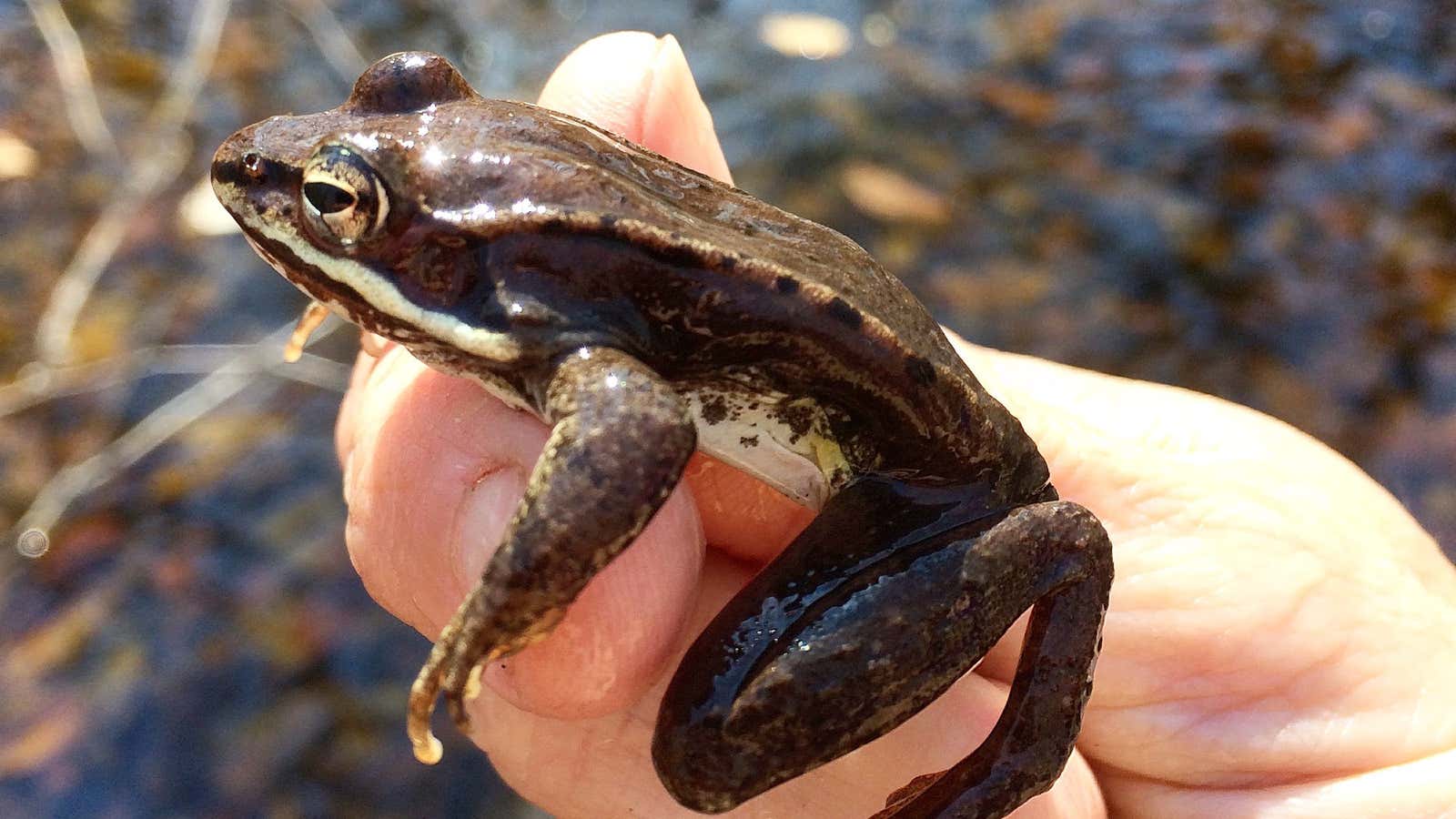My suburban childhood in the US northeast featured a small pond in the nearby woods. I remember the frogs at the pond in spring looking normal enough. A paper published this week in the Canadian Journal of Fisheries and Aquatic Sciences suggests there was likely something a bit off about them, though. They were probably raised on human poop.
The study looked at the nitrogen inside the bodies of tadpoles living in ponds near suburban neighborhoods in Connecticut to figure out what they were eating. Nitrogen is an essential element for all living things, including people. But instead of finding the type of nitrogen that would come from a rural tadpole’s typical diet of leaf litter, they found nitrogen associated with human sewage. That meant they were most likely eating plant life grown on suburbanite poop.

“It suggests that tadpoles and other pond organisms are made up of human waste,” said Meredith Holgerson, a research fellow at Portland State University, in a statement. Holgerson conducted the research when she was a PhD student at Yale University in Connecticut.
Most home septic systems leach wastewater into the surrounding ground slowly over time, and in many parts of the world, that wastewater eventually reaches these idyllic little water bodies. The influx of sewage causes algae to blossom; the tadpoles in the recent study were eating algae that had grown from the septic water. As much as 70% of the tadpoles’ nitrogen was from septic wastewater, according to the paper.
“They’re definitely having different food sources—they’re forced to eat more algae cause there’s less tree cover around these ponds,” Max Lambert, an urban ecology graduate student at Yale and another author on the paper, told Quartz. “The base sources of nitrogen in these systems is coming from our septic systems. They’re the dominant contributor of nutrients in the system.”

It’s just another example of the many ways, large and small, the mere presence of humans on the landscape changes the fundamental structure of the surrounding ecosystem. It’s not clear that the tadpoles are any worse-off for their human-waste-derived diet, however. Lambert says he hopes to study that next; in particular, he’d like to know if artificial hormones and other pharmaceuticals from wastewater might be making their way into the lives of pond creatures.
